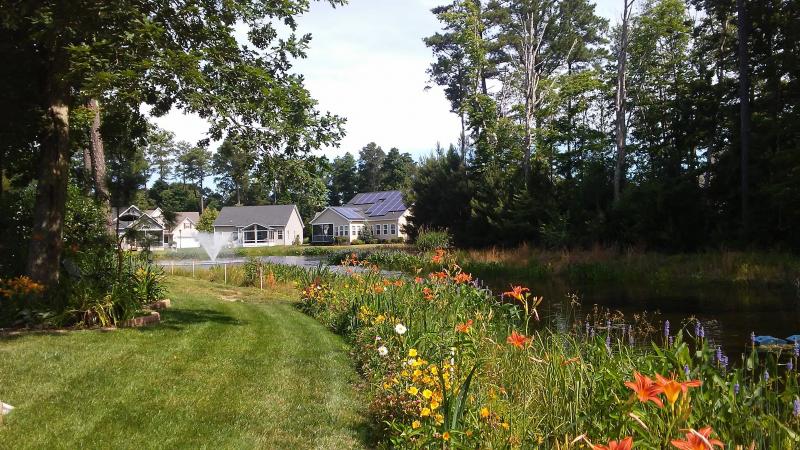The summer season means warmth, sunshine and long days to enjoy swimming, boating, fishing and spending time around the water. Unfortunately, the warm weather can also promote the growth of algae blooms in lakes and ponds used for recreation and drinking water. In community waterbodies, moderate amounts of algae are normal, but excess algae levels may indicate that the ecosystem’s natural balance has been compromised.
Without swift and proper management, certain species of algae, like cyanobacteria, can begin producing harmful toxins. Following exposure to or digestion of these toxins, humans and animals can experience skin rashes, liver and kidney toxicity, nervous system problems, respiratory complications and even death. Exposure to cyanobacteria also has suspected links to the development of degenerative diseases like ALS, Alzheimer's and Parkinson's disease.
Harmful algal booms can occur naturally, but they have been a problem for decades due to the negative environmental impacts associated with urban development, mass agriculture and pollution. In recent years, private research and greater public awareness of HABs have brought nationwide attention to dangerous cyanobacteria blooms like the one currently plaguing Lake Okeechobee, the largest lake in Florida.
To help limit the growth of HABs in community waterbodies, SOLitude Lake Management, an industry leader in lake, stormwater pond, wetland and fisheries management services, recommends the following sustainable measures to homeowners, golf courses, reservoirs and municipalities:
• Properly identify HABs. Accurate identification of harmful algal blooms is the first step to protect family, pets and wildlife from the negative effects of algal toxin exposure. Depending on the waterbody, a potentially harmful bloom may manifest in parallel streaks or clumped dots. Other blooms may look like spilled blue, green or white paint, or turn the water a bright pea soup green. Keep an eye out for soupy or oily scum on the water surface.
• Properly dispose of organic materials. Following yard work, leaves, grass and other debris should be bagged and removed from the property. If they accumulate and decay in the waterbody, they release undesirable nutrients that fuel nuisance plant and algae growth.
• Establish a beneficial buffer. Steps should be taken to intercept runoff containing sediment, trash and other organic materials from entering lakes and ponds during rainstorms. Allow native, flowering, deep-rooted vegetation to grow 3 to 5 feet from the edge of the lake or pond shoreline in a beautiful buffer.
• Reduce excess nutrients. For lakes and ponds with chronic nutrient problems, the application of phosphorous-locking technologies, such as Phoslock and Alum, can make a noticeable impact. When applied by a licensed professional, these products work to rapidly remove free reactive phosphorous, improving water clarity and permanently reducing undesirable nutrients so they can no longer contribute to harmful algae growth.
• Add aeration. When paired with other nutrient-limiting strategies, floating fountains and submersed diffused aerators can help consistently circulate water and facilitate the conversion of phosphorous and nitrogen to nutrient forms that do not sustain algae.
• Apply beneficial bacteria. Another way to limit algae's food source is through the introduction of bacteria and enzymes, a process called biological augmentation. The beneficial bacteria can help consume pond nutrients that fuel nuisance algae blooms and help promote degradation of organic nutrient sources.
• Regularly test water quality. Rather than waiting until after a toxic algae bloom appears to conduct water-quality tests, a proactive testing program can help identify water-quality problems related to dissolved oxygen, pH or nutrient levels before they get out of hand. Over time, water-quality data can be used to predict and prevent potential blooms without closing the waterbody or interfering with irrigation or drinking water services.
By taking the appropriate proactive steps to protect a lake or pond from HABs and nuisance algae, communities can help ensure the protection of native plants and wildlife, and enjoyment of a waterbody throughout the summer. Through this approach, the ecological balance and natural beauty of your waterbody can be achieved, maximized and appreciated for years to come.




















































